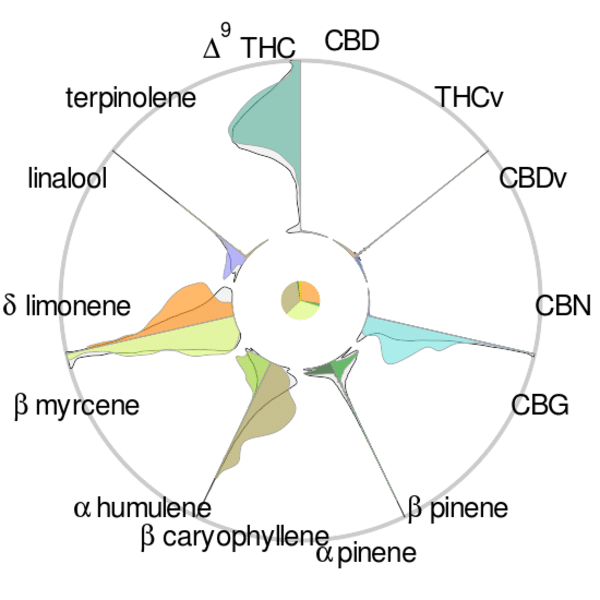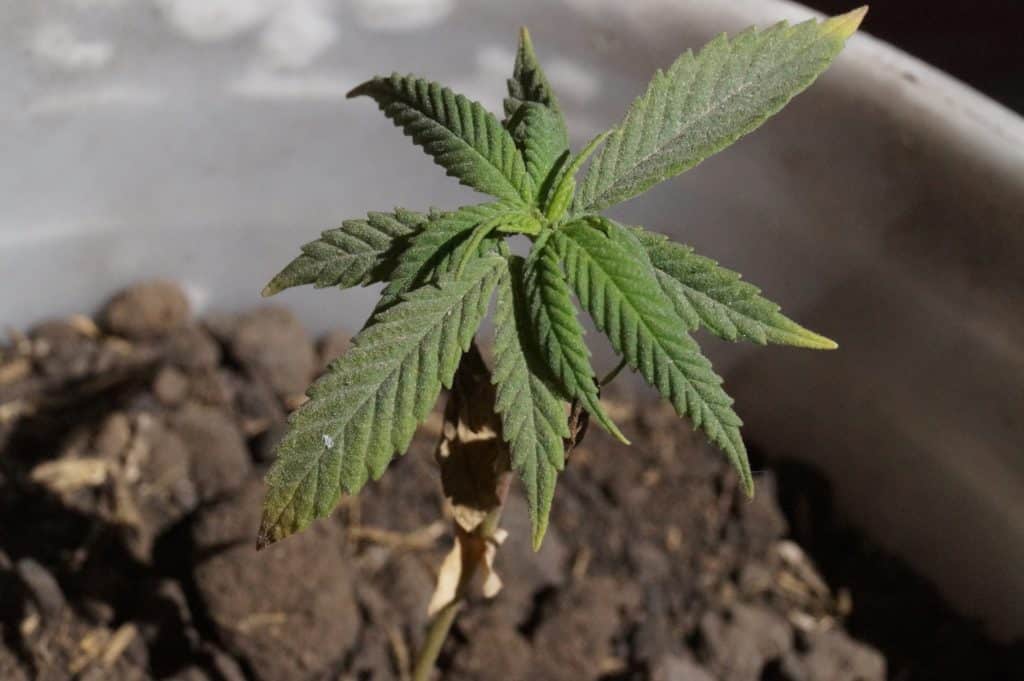
By: Michael Robinson
I love learning about cannabis.
Over the last three decades I’ve parsed all kinds of cannabis information of varying quality. Though misinformation (e.g., broad leaf varieties are higher in CBD than narrow leaf ones) and disinformation (e.g., cannabis is a gateway drug) persist, there are true facts out there – and more and more data is becoming available as legalization un-yokes us from the previously unyielding barriers that have prevented so much meaningful investigation.
There is much to learn about this plant. From our at least 6000-year history of interacting with it, to the roughly 45,000 unique cannabis products for sale on the shelves of Washington State rec shops, we humans are just beginning to scratch the surface of this trove of enlightening emerald providence.
New tools are emerging to help us make sense of the wide variety of products suddenly available. Sites like Leafly aggregate users’ strain reviews and provide a useful interface for consumers to learn more about others’ experiences. The Phylos Bioscience Strain Galaxy helps us understand the genetic relationships between our favorite varieties and offers useful clues to cannabis breeders and scholarly investigators alike.
And now we have Connect by Confident Cannabis – an extraordinary new tool that offers deep insights into the varieties of flower available in legal markets by displaying scientifically-verified chemotype and terpenoid data for thousands of strains in a unique visual interface.
The 3D representation takes the shape of a cluster of thousands of spheres floating in space, and is populated by data pushed from 50 testing laboratories in the eight states with the most robust recreational and/or medicinal cannabis markets. Each sphere represents either a variety that was grown multiple times by a single producer, called a Private Dot, or a composite of all the varieties in the cluster that share the same name, called a Composite Dot. The 3000 or so spheres are arranged so that varieties that share the most similar chemical profiles are positioned closest to one another in the virtual space.

Click on a sphere, and its chemotype imprint appears at the bottom of the screen. The Imprint resembles a Dali-inspired dream catcher: a circle, divided by multiple, labeled axes, each an x-axis for a distribution curve representing the probable concentration of six cannabinoids and eight terpenes in the variety.

It’s empowering to drag the cluster about and fly around, zooming in and out, examining its shape and discovering micro-clusters of similar varieties. Just absorbing the reality of my favorite plant’s diversity of expression is uniquely satisfying. The interface includes a feature that highlights 25 regions in the cluster that have the most similar ratios of cannabinoids and terpenes. Insights like this are incredibly useful.
It’s a thrill to be able to learn so much – and this data can help us understand so much more. For example, research suggests that different ratios of cannabinoids modulate the human endocannabinoid system’s response through what is called the entourage effect. The jury is still out on how various terpenes might be involved as well. Now we have access to one of the missing puzzle pieces – Connect’s data can potentially help sort out these big questions by identifying which varieties to compare in a clinical setting – and by pointing us towards countless other intriguing new avenues of investigation.
This is a tool for everyone with a connection to cannabis: consumers, retailers, wholesalers, producers, and breeders can all use Connect to level-up on their cannabis education. Scholars can use this data to investigate all manner of questions. Geeks like me are having an enormous amount of edifying fun exploring this dataset and gaining a better understanding of the specific chemistries that make-up our favorite cannabis varieties. Players in the rest of the supply chain are browsing the cluster to find varieties similar to best sellers and to identify underserved niches to bolster and diversify their offerings.
Cannabis businesses in Oregon are using Connect as an interface to browse an extensive data-backed wholesale catalog. Flashing spheres in the cluster represent products available on Confident Cannabis Wholesale, their wholesale cannabis ordering platform. The system automatically generates product pages that link directly to the spheres representing their data in the cluster. Options to buy become available when a verified wholesale cannabis buyer clicks on one of the flashing spheres. The company has plans to roll the platform out to more states in the coming months. This game-changing feature is redefining the way product is traded – but that is a story for a different article.

This is the biggest dataset of its kind, and it is constantly growing, updated every five minutes, but it is not exhaustive. By now I’ve queried hundreds of variety names found on menus all over Seattle and they are not quite all there. Brad Bogus, Confident Cannabis’ VP of Growth and Marketing tells me this is likely due to a number of possibilities:
- Many names were changed to reflect trends in the regulatory community intended to protect children. Examples of this include changes from ‘Girl Scout Cookies’ to ‘GSC’, ‘Candyland’ to ‘Confection Land’, and ‘Blueberry Cookies’ to ‘Blueberry Biscuits’ (though I doubt this last change will appease any British or Australian regulators).
- The Connect team made a proactive decision to change names that could invite copyright challenges. E.g., ‘Gorilla Glue’ is known as ‘GG’ in the cluster.
- Some varieties are proprietary and are missing in order to protect privacy.
Brad also shared that they are considering a feature that can predict which variety you might mean when searching for a changed name. For example, if I were to type in ‘Fruity Pebbles’, Connect would show me the dots labeled ‘Fruity Stones’ as it is known in the system. In the meantime, a list of all the strain name changes can be found here.
Unfortunately, the scope and depth of the cluster are limited by the number of labs in some states that have the ability to test flower for terpene concentrations, and there is only a subset of laboratory clients that demand this information. (A notable exception here is Nevada, where terpene testing is required by law.) We are already seeing market trends that suggest that consumer demand for these more detailed assays is growing. Connect is brand new; I predict these limiting considerations will diminish over time.
Even with these limitations, this cluster is adding tremendous value to my life as a cannabis appreciator.
I am just one person, though. The real promise of Connect is the opportunity for businesses operating at every segment of the cannabis supply chain to use the cluster as a tool for making data-driven decisions that, in aggregate, will add value to the industry as a whole.
The future looks bright. The cluster is growing.




